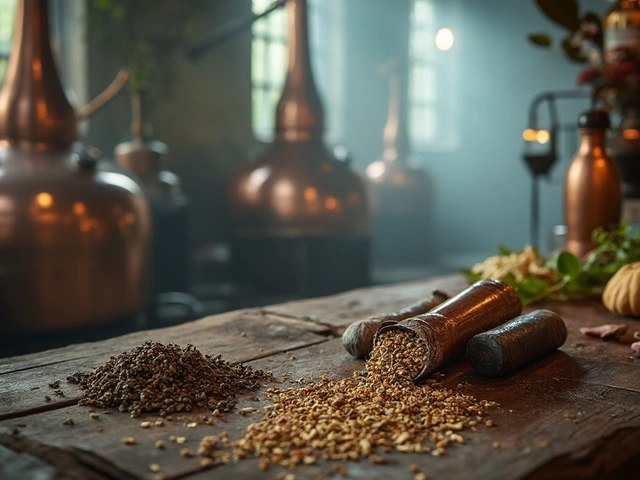Gin Varieties: What to Know and How to Taste
If you’ve ever stared at a gin shelf and felt lost, you’re not alone. There are dozens of styles, each with its own botanical mix and flavor vibe. This guide breaks down the most common gin varieties, how to taste them, and which cocktails they shine in. By the end, you’ll know which bottle to grab next time you’re out.
Classic Gin Styles
London Dry Gin is the go‑to for many bars. It’s crisp, dry, and packed with juniper – think classic martini or gin & tonic. No sweetness, just clean botanicals that let the mixer do the work.
Old‑Tom Gin sits between London Dry and sweeter styles. It has a subtle honey note that makes it perfect for historic cocktails like the Tom Collins. If you like a bit of sweetness without sugar overload, give Old‑Tom a try.
Plymouth Gin comes from the city of Plymouth and is slightly less juniper‑forward than London Dry. It’s smooth, a bit earthy, and works great in a gin fizz or a simple G&T with a twist of lemon.
New‑Wave or Contemporary Gin focuses on creative botanicals – think cucumber, rose, or even smoked tea. These gins let you experiment with fresh cocktail ideas and are perfect for a summer spritz.
Geneva (or Dutch) Gin is the original style, sweeter and spicier than London Dry. It often has coriander and citrus, making it a solid base for a gimlet or a French 75.
Choosing the Right Gin for Your Cocktails
First, think about the flavor you want to highlight. For a dry martini, stick with a London Dry that’s high in juniper. Want a bright, herbal cocktail? A New‑Wave gin with floral notes will do the trick.
Second, consider the mixer. If you’re using tonic water, a crisp London Dry or Plymouth works best – the tonic’s bitterness balances the gin’s botanicals. For sweeter mixers like ginger ale or fruit juice, an Old‑Tom or New‑Wave gin adds depth without clashing.
Third, match the gin to the occasion. Hosting a backyard BBQ? A citrus‑forward gin pairs nicely with frozen drinks. Planning a formal dinner? A smooth Plymouth or a classic Geneva adds elegance to a sophisticated cocktail.
Finally, taste before you buy. Pour a small splash over ice, add a few drops of tonic, and see how the botanicals pop. If the flavor feels flat, try another style – tasting is the fastest way to learn what you like.
Bottom line: there’s a gin for every palate and every drink. Experiment with the five main varieties, note how they taste neat and with mixers, and you’ll soon have a personal gin toolbox. Cheers to finding your perfect gin match!
Among the world's celebrated gins, Tanqueray has stood as a beacon for gin lovers due to its rich history and exquisite flavors. This article delves into the different varieties of Tanqueray Gin, exploring their unique characteristics and popularity. It's a guide for enthusiasts looking to deepen their appreciation of each variant while offering insight into the brand's historical context. We'll also uncover some secrets behind Tanqueray's timeless appeal that have made it a favorite for nearly two centuries.
View Details

